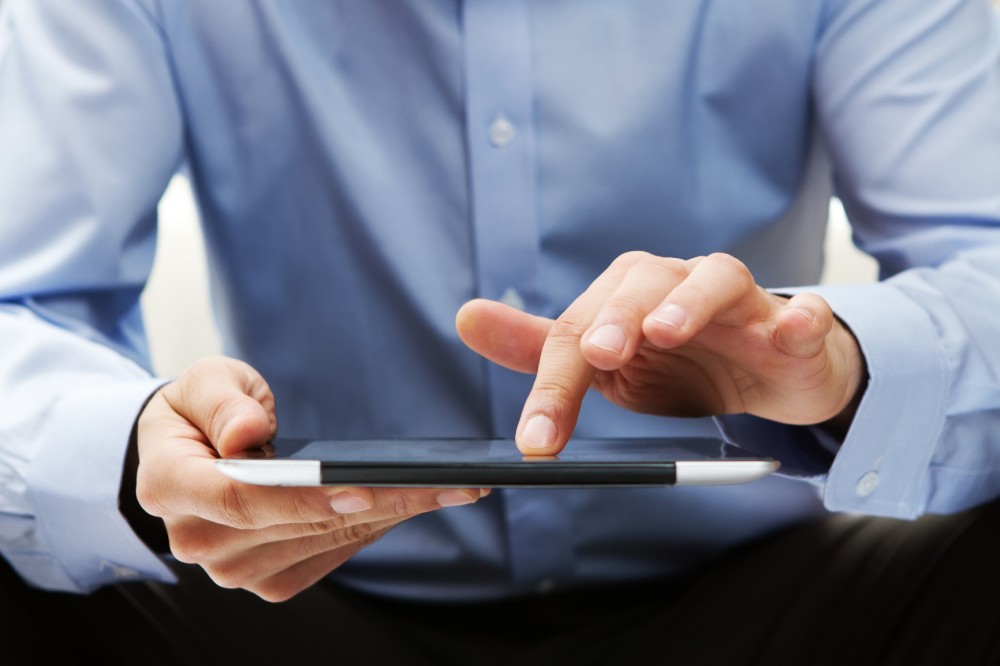Is it time to upgrade your tablet? If it’s more than a couple of years old, you probably should. You’ve missed out on a lot of advances in display definition, better processors, and higher RAM that could make your tablet experience a lot smoother and more productive.
Tablets are also a lot lighter and thinner, with tons of apps and features and can even measure up to a laptop at 15.6 inches in display size. Bigger tablets can be better, and not much heavier than a smaller device, but still loads lighter than a laptop.
Size Matters
Working consistently on a small screen and mini keyboard can be annoying, so if you’re doing a lot more work with your tablet, it’s worth it to upgrade both in terms of display and functionality. Larger format screens start at 10 inches and can exceed the size of laptop displays.
The most popular sizes are the newer and pricier 12 inch models or the more affordable 10 inch models like the Nook Galaxy Tab 4 by Samsung. Depending on what you use a tablet for – a multimedia device, gaming, graphic design, or as a laptop replacement – you’ll want to consider the specifications carefully.
Very often a tablet that you think is a great deal may not have good resolution, or a more up-to-date processor, or enough RAM to do what you want it to do.
Shop for Right, Not Cheap
Tablets are a fast growing segment of the world market. As people need to bring the internet with them, and in a more easily usable form than a laptop, tablets users worldwide are estimated by eMarketer to pass the 1 billion mark this year.
Tablets have a lot going for them, including portability, ease of use, and a variety of applications available via sources such as iTunes for iPads, Google Store for Android devices. Shopping for a cheap tablet risks getting locked into older versions of operating systems without as much functionality, or getting stuck with outdated hardware.
If you want a useful tablet that you’ll still be using two years from now, getting a newer model is critical. Here’s a few of the things you’ll need to look for.
- Operating System: Android has just released version 6 of its operating system called Marshmallow, and iOS for Apple devices is on version 9. Windows operating systems are also available, but you should look for them to be running at least Windows 8 and not Windows RT, which is becoming quickly obsolete. Windows RT does not support Microsoft legacy software, and apps are thin on the ground at the Windows Store. There are also some tablets coming to market with the Chrome OS from Google, with all the apps you can find for Android. At the moment, Statista notes that Android is the most popular OS across all devices, with 66 percent of the global market share.
- CPU: The GHz doesn’t always tell you the whole story since the number of cores also factors in. You’ll find dual core, quad-core, octo-ore, and even multiple processors, depending on the model and manufacturer. In general, the higher the GHZ, the better. You’ll find Apple with their own proprietary chips, but some of the most popular processors are Intel Atoms and I-series, NVIDIA Tegra, Snapdragon, and Exynos.
- RAM: You’ll find that tablets running Windows usually have the most RAM, generally because they are running the full Windows OS in either version 8 or 10. More lightweight OS tablets from Chrome, Android, and Apple have 2GB to 3GB. The more RAM you have and the better your processor, the more smoothly your tablet will run, with less hanging and crashing.
- Display: Most tablets now offer way better than 1080P, with resolutions typically in the 2560×1600 range. Also check out the PPI (Pixels Per Inch) number.
The adoption of tablets is one of the fastest growing demographics, with 45 percent of Americans owning and using a tablet as of the recent Pew Research survey. A tablet fills a lot of the niches once taken up by portable DVD players, full-sized laptops, MP3 players, and GPS devices. You may end up consolidating a lot of your extraneous devices into a tablet with additional peripherals such as a Bluetooth keyboard, stylus, speakers, and headset.
With cloud-based applications, you will find that everything from gaming to homework is portable in a way that’s not possible with a laptop, and more usable than a smaller format tablet or smartphone. With Black Friday and Cyber Monday coming up, you should be able to get some great deals on newer models with just a point and click – or a swipe and tap.

